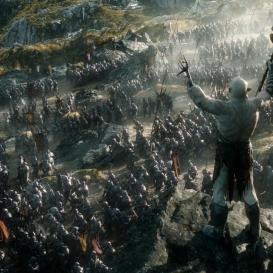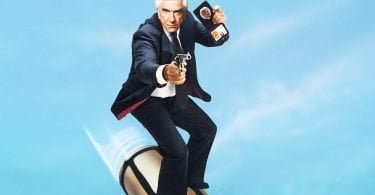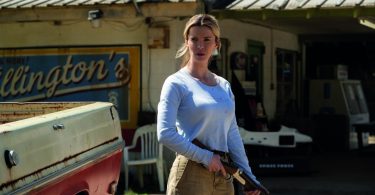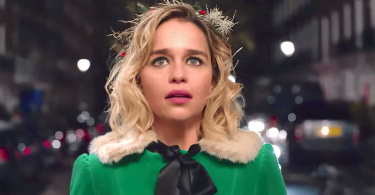There were many who wondered how on earth Peter Jackson would manage to drag out The Hobbit, Tolkein’s slender prequel to the Lord of the Rings epic, across three movies. It turns out it involves every small detail of the children’s fantasy tale being bloated to the extreme. This final instalment protracts a battle sequence, which takes up a mere handful of pages in the book, over an hour, and despite the highly impressive CGI effects, you can’t help but roll your eyes and mutter, ‘Get on with it’.
The movie opens with the enraged dragon Smaug, evicted from his home in Erebor by a group of determined Dwarves, wreaking fiery mayhem over innocent Laketown, in probably the most impressive action sequences of the movie. Fortunately, archer Bard the Bowman takes the opportunity to pierce the dragon in his weak spot during one of the beast’s drawn out, hissing speeches.
Lonely Mountain
The now homeless and bereft townspeople head to the Lonely Mountain to gain some compensation for their loss. However, Dwarf King Thorin Oakenshield (Richard Armitage)has caught ‘dragon sickness’, and become monomaniacally obsessed with gold, treasure and precious Dwarf heirloom, the Arkenstone. Soon the news of Smaug’s death spreads across Middle Earth, and armies of Elves, Dwarves and Orcs descend on the mountain, all looking to claim the golden stockpile.
It’s an exaggerated condemnation of materialism and money-based obsession, which would have a greater impact if Jackson and co hadn’t decided to milk the box office potential of The Hobbit to the extreme. Whilst all of the instalments have been unnecessarily enlarged, The Battle of the Five Armies has so little substance, it feels like walking in to a movie three quarters of the way through, just in time to catch the finale but none of the actual plot.

Pantomime performance
The Hobbit himself, that is, Bilbo Baggins played by Martin Freeman, feels a bit lost and redundant in this grandiose battle movie. It’s Thorin Okenshield and his fellow Dwarf and Elf allies who dominate the screen. Armitage’s portrayal of the gold-crazed maniac is authentic and commendable – unlike Alfrid Lickspittle (Ryan Gage) whose pantomime-villainesque performance as a gold-thirsty coward was rather irritating.
The variety of ugly and disfigured monsters on the Orc side, including tunnelling worms, flocks of killer bats and their chieftain, Azog, were some of the most remarkable creations of the film. These ferocious creatures, pitted against the meticulously disciplined golden armoured Elves, and the rugged brutality of the Dwarves, all against a stunning icy mountainous landscape, made for some spectacular aesthetics. That was exactly the problem with this film though, it was all aesthetics with little actual substance. But then again, that is to be expected when you base a whole movie on six pages of a novel.
It’s a shame that The Hobbit trilogy, and The Lord of the Rings franchise as whole, ended on such a bum note. It’s clear to see now that a single movie or two-part series would have worked much more successfully with the story at hand. An unintentionally comic scene in which action-hero Elf Legolas (Orlando Bloom) runs up some freefalling brickwork with unrealistic grace and ease symbolises the trilogy as a whole for me. While all laws of common sense suggest the story should have ended by now, The Hobbit franchise lives on with exaggerated grandeur and drama. Except now the bricks have finally ran out and The Hobbit has been laid to rest at last, no more to line the pockets of its creators.









